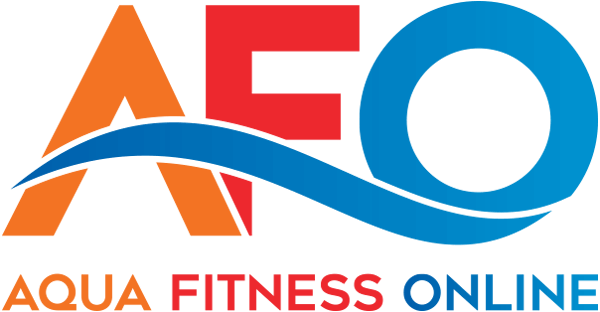Author and Aqua Yoga Specialist – Christa Fairbrother.
If you’re an aqua aerobics instructor, you probably have not given much thought to meditation in the pool. However, the pool can be a valid place to practice mindfulness and meditation. Below are a few tips to get you started. Click here to follow and experience the therapeutic benefits of 10 minute floating mediation.
First off, what’s mindfulness? What’s meditation? And what’s the difference?
As an aqua yoga teacher, I distinguish between mindfulness and meditation from a yoga perspective.
Mindfulness is bringing attention and care to your time in the pool. In aqua aerobics, that would be using your gear with good ergonomics and staying focused on your own workout instead of chatting with the friend next to you.
Meditation is asking for a deeper level of concentration. Many people think meditation is thinking of nothing, but that’s not the case. It’s trying to focus on one thing at a time. Just one. Which is hard to do. And it’s harder to do while moving and usually requires slowing down. If you want to offer meditation in an aqua aerobics format, consider offering a short meditation as a transition, either at the beginning or end of class, to help people shift between the land and aquatic environment.

In Aqua Yoga, we offer three types of meditation practices; concentration practices, integration practices, and contemplation practices. Concentration practices are focused on bringing your awareness to something outside yourself, such as music. In aqua aerobics, the difference between mindfulness and meditation would be how purely you’re listening to the music. You’re not absorbed in the music in a level III move. The boundary here is fuzzy as you start to move, and people can struggle with bringing a contemplation practice into pure meditation in an aqua aerobics format.
Integration practices ask you to focus on something inside yourself, such as your breath or the feeling of the water on your skin. I find these are easier for people to connect with while doing gentle movements within an ‘aerobics’ format. Moving with a specific breath pattern requires significant focus and presence in the moment.
Contemplation practices reflect on a spiritual question or an idea as a point of focus. An affirmation or Mantra, something you repeat to yourself over and over to stay focused, would be an example of this. Something like, “You’ve got this,” is a sports affirmation and very easy for people to accept. Om is a Mantra you’ve maybe used in a yoga class.
For beginners, these gentle techniques can lower the barrier to mindfulness and meditation so they’re more open to the idea of a more dedicated practice. Once you introduce the idea, you can lengthen the practice, slow the other activities, and get deeper into mindfulness and meditation. The closing sequence during an Ai Chi class is a great example of a moving aquatic meditation. You could start to include that activity as a long cool-down for a more traditional aqua aerobics format.
In aqua yoga, we take it a step further and try to offer a full meditation. On cold days, or in cool pools, the Ai Chi techniques blend very well into aqua yoga. When you have the time and facility for a full meditation, think about offering a floating meditation.
While I use the word ‘floating,’ keeping one’s head out of the water is always an option to accommodate people who don’t want to get their heads wet. Offering buoyant gear to provide some support helps people’s nervous systems calm down. I’ve provided an audio meditation as a companion to this article. In that, I use one pool noodle, and it’s a head-out meditation that you can use in the pool and practice along with.
If people are putting their heads underwater, give directions for how to get out of their meditation first because they won’t be able to hear you once under. Give people directions on how to direct their focus. Give people directions for what to do when their focus wanders because it will. Then, give them directions for how to float, and let them have their experience.
There is no ‘wrong’ way to meditate. If it doesn’t work out according to your expectations, you just practice again. Research into land-based meditation shows benefits such as reduced pain and better mood. The only research we have for water-based meditations is for float tanks, so it’s hard to draw the exact same conclusions, but they have found similar reductions in pain and improvement in mood.
Aqua aerobics is an awesome workout and plays an important role in many people’s exercise programs. In our fast-paced world, slower-paced programs like aqua yoga can fill a companion role of helping people reduce stress and their cortisol levels. Since many people only allow one slot in their lives for self-care, finding ways to blend the programs can serve them even better.
Christa Fairbrother, MA, ERYT-500, ATRIC, AFP, AFAP, is an internationally recognized Aqua Yoga coach and trainer who helps people and pros practice aqua yoga.
To learn more about Aqua Yoga, contact Christa via https://www.christafairbrother.com/
